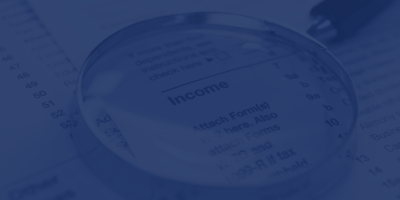- Home
- Grey Matter
- Legal Basis For Implementation Of The IFRS 9 Reporting Standard And Its Tax Implications For Nigerian Entities
Legal Basis For Implementation Of The IFRS 9 Reporting Standard And Its Tax Implications For Nigerian Entities
Posted on Sat 28 Sep 2019
- Download Resource
Introduction
On July 24, 2014, the International Accounting Standard Board (“IASB”) launched the International Financial Reporting Standard 9 (“IFRS 9”) as the global accounting standard for the measurement and classification of financial instruments in the financial statements of corporates. The IFRS 9, which became effective for annual periods beginning on or after January 1, 2018 (with early application permitted) replaced the International Accounting Standard 39 (“IAS 39”) which was in operation between 2001 and 2017.
As from the date of its publication, the IFRS 9 became available for adoption by national accounting standard-setters around the world in order to effectively achieve the G20-endorsed objective of global accounting standards. Nigeria adopted the IFRS reporting standards in 2012, and was, by implication, one of the jurisdictions expected to migrate from the IAS 39 regime to IFRS 9.
IAS 39 was criticized by many auditors and users of financial statements for being complex and not easily adopted and user-friendly. Essentially, the IAS 39 regime was plagued by several shortcomings, such as (i) complex and rules-based classification methods for financial instruments, (ii) multiple impairment models leading to avoidable credit crunch, (iii) inability to reflect economic and business realities, and (iv) failure to make adequate provisions for efficient credit risk capture because it unnecessarily deferred recognition of credit losses on loans and receivables until too late in the credit cycle. It was therefore identified as a major contributor to the 2008 global financial crisis.

In response to these criticisms, the IFRS 9 was launched, and it seeks to introduce significant reforms in the areas of classification and measurement of financial assets, hedge accounting transactions, and disclosure requirements, which have significant tax implications for business entities[1]; particularly in the areas of tax deductibility of impairment losses and tax treatment of financial instruments at fair value through profit or loss.
This article reviews the legal basis for implementation of the IFRS 9 and its tax implications for entities carrying on business in Nigeria. It also considers the reforms introduced by the IFRS 9 regime and possible challenges to implementation of the accounting standard, as well as the likely implications on financial assets management for public entities operating in Nigeria.
-
The IAS 39 regime and the reforms introduced by IFRS 9
Under IAS 39, financial assets[2] were classified into one of the following four categories:
-
financial assets at fair value through profit or loss;
-
available for sale financial assets;
-
loans and receivables; and
-
held-to-maturity investments[3].
These categories were used to determine how a financial asset was recognized and measured in the financial statements of an entity.
On the other hand, IFRS 9 introduced a logical classification and measurement model for financial assets. Key features of the new accounting standard include the following:
-
It replaced the impractical IAS 39 “incurred credit loss” impairment model with a pragmatic “expected credit loss” impairment model;
-
It entrenched a substantially reformed approach to hedge accounting transactions, which aligns hedge accounting principles more closely with business risk management; and
-
It successfully addressed the shortcomings of IAS 39 by specifying a coherent process for classification and measurement of financial assets, assessment of financial liabilities, and determination of contractual rights for the buying and selling of certain non-financial items.
Fundamentally, it requires that when an entity first recognizes a financial asset, it classifies it based on the entity’s business model for managing the asset and the asset’s contractual cash flow characteristics. Ordinarily, these are done distinctly as (i) Amortized cost, (ii) Fair value through other comprehensive income, and (iii) Fair value through profit or loss.
-
-
Legal basis for implementation of IFRS 9 in Nigeria
The Financial Reporting Council of Nigeria (“FRCN”), established under Section 1(1) and (2) of the Financial Reporting Council of Nigeria (Establishment) Act 2011[4] (the “FRCN Act”), replaced the defunct Nigerian Accounting Standards Board responsible for developing and publishing accounting and financial reporting standards to be observed in the preparation of financial statement of public interest entities (“PIEs”)[5] in Nigeria. PIEs include quoted and unquoted companies and also governments, government organizations, and not-for-profit entities that are required by law to file returns with regulatory authorities.
FRCN is empowered to enforce and approve enforcement of compliance with accounting, auditing, corporate governance, and financial reporting standards[6] in Nigeria[7] and to require entities[8] to provide real time disclosures on material changes in financial conditions or operations [9].
Following enactment of the FRCN Act in 2011, the IFRS standards were adopted in Nigeria on January 1, 2012 as part of measures to improve financial reporting practices, transparency, and disclosures. The adoption of the IFRS standards implies that all revisions to existing IFRS standards, as well as new accounting standards issued by the IASB, are now required to be adopted by all financial reporting entities in Nigeria[10]. Indeed, sections 8 and 52 of the FRCN Act provide statutory approval for the adoption and enforcement of IFRS and IASB-approved accounting standards in Nigeria.
More Insight
 Tue 16 Jul 2024
Tue 16 Jul 202450% Deposit For Prosecution Of Tax Appeals In Nigeria And ...

 Wed 3 Jul 2024
Wed 3 Jul 2024The WHT Regulations 2024 and what businesses should expect






